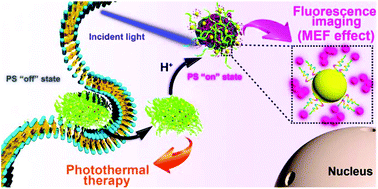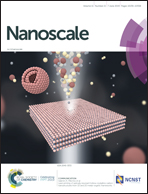Fluorescence-enhanced covalent organic framework nanosystem for tumor imaging and photothermal therapy†
Abstract
Fluorescent dyes, as a key factor in fluorescence imaging, usually exhibit a low signal-to-noise ratio (SNR) due to the limited loading capacities of delivery systems (usually less than 10.0 wt%) and their uncontrolled release. Herein, we developed a type of pH-responsive nanoplatform (MnO2/ZnCOF@Au&BSA) based on a zinc porphyrin covalent organic framework (COF), in which the zinc porphyrin (ZnPor) loading rate is 22.5 wt%. At pH = 7.4, the interlinked ZnPor in the assembly state did not show a fluorescence signal (“off” state). Together with the pH-triggered disintegration of ZnCOF in tumor cells (pH = 5.5), the scattered ZnPor displayed an obvious fluorescence signal recovery (“on” state). Simultaneously, the shed BSA-coated gold nanoparticles ingeniously caused the fluorescence signal to be further amplified through the metal-enhanced fluorescence effect, which was about 3.0-fold higher in vivo than in the free ZnPor group. Combined with the excellent photothermal therapy effect by the nanoplatform itself with the tumor inhibition rate of 79.5%, this nanosystem effectively solves the problem of low loading capacities and imaging SNR by traditional delivery systems, and successfully develops the potential of COFs for fluorescence imaging, achieving the purpose of integration of diagnosis and treatment.



 Please wait while we load your content...
Please wait while we load your content...